The south side of Chicago’s bad reputation, as amplified by the media, is naturally an oversimplification and distortion of the truth. There’s actually a lot to love south of The Loop — history, art, museums, parks, culture, food — that rings more authentically than their counterparts in the posh neighborhoods to the north. But as long as news reports of violence and crime continue to be the most effective way to market cars and laundry detergent, the billionaire class will not stop spinning the yarn of Chicago as a lawless warzone where you *will* be murdered if you dare set foot.
The reputation of the 2024 Chicago White Sox, on the other hand, pales in comparison to how bad this team actually is:
At the All-Star break, the South Siders’ record stands at a major league worst 27-71, putting them on pace for 117 losses at the end of the year.
They rank dead last in the majors in runs scored and second to last in runs allowed.1
The player earning the highest salary this year, third baseman Yoan Moncada at $24.8 million, has played a total of 11 games due to injury.
The player being paid the third most this year isn’t even on the roster: reliever Liam Hendriks took a $15 million buyout from his contract and is now rehabbing from Tommy John surgery with the Boston Red Sox.
The team’s only All-Star, pitcher Garrett Crochet, leads the majors in strikeouts but is expected to be traded by the end of the month so the team won’t have to pay him what he’s worth in arbitration over the next two seasons.
This is a broken franchise, run by an owner who cares more about money than winning, trending perilously close to the dubious distinction of the most losses in baseball’s modern era. It’s not hyperbolic to say that this specific part of Chicago is *the worst.*
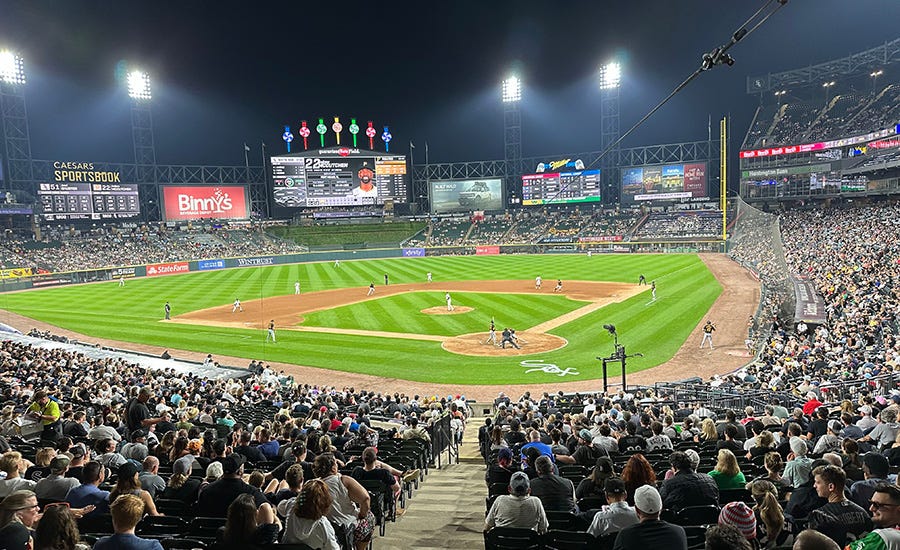
This White Sox team is so bad that I didn’t even bother buying tickets in advance. In fact, even for a Friday night contest with a post-game fireworks show, the last few rows of the upper deck weren’t offered for sale because attendance has been abysmal so far this season.2 I organized a decent sized group to come to the game and figured I’d be able to swoop in on SeatGeek or StubHub at the last minute and grab some good seats for cheap.
However, as of Friday afternoon, the deals still hadn’t come: upper deck seats that showed up as $9 were actually more than $20 once hidden fees were factored in. Lower bowl seats were less than face value but still absurdly high priced. It’s possible if I had only needed one or two tickets that I may have found the bargain I was looking for, but I was in the market for seven tickets, preferably split between two rows to facilitate group conversation, which made acceptable options a little harder to come by.
As I pored over the options with my friend Russ, he suggested that we just drive down to the ballpark, buy tickets directly from the box office and skip the Ticketmaster or secondary market fees. We were planning on grabbing lunch3 and picking up some snacks for Jeff before we visited him in the hospital downtown,4 so going a little out of our way to save $10 per ticket in convenience fees didn’t seem all that inconvenient.
With tickets in hand — or more accurately, on my phone — by 1 p.m., I started the logistics planning for a 7:10 first pitch via group text. My friends Lisa, Mike, other Mike, Dave, Pete and his son were all coming to the game, but because I bought my tickets in person, I couldn’t easily transfer them to each person individually. We made a tentative plan to meet up at Marz Community Brewing Co. located about a mile and a half from Guaranteed Rate Field, for pre-game drinks at 5:30 p.m.
After Russ and I wrapped up our hospital visit, he offered to drop me off at the brewery so I wouldn’t have to take the train and make the hike. On the way, we did some drive-by sightseeing, including The Bean in Millennium Park, the newly-renovated Old Post Office building and the 16th Street mural wall in Pilsen that stretches for nearly a mile and a half from Wolcott to Halsted.
Naturally, with the good deed from Russ, I was the first to arrive at Marz and well before anyone else. As it would turn out, only Lisa and Mike would join me for beers as the others were either delayed in traffic or understandably unwilling to make the 35-40 minute walk from the Red Line stop to the brewery. After texting instructions to the group at the ballpark to pick a rendezvous point near one of the gates, we finished our drinks and booked a Lyft to take us to the ballpark.

We were through the gates a little after 6:30 with roughly a half hour until first pitch. Our seats were in section 538, in the upper level about halfway between home plate and third base. Guaranteed Rate Field was the last ballpark to open before Baltimore unveiled Oriole Park at Camden Yards and fundamentally changed the game day experience for fans. When it debuted, the stadium attempted to capture some of the characteristics of the White Sox’ longtime home, Comiskey Park, but with modern-at-the-time upgrades.
The most controversial of these modern touches was the placement of the upper seating decks further back from the field of play, removing the overhang from the lower seats and eliminating support pillars that obstruct fan views like the ones at Wrigley Field to the north. Fans did not take a shine to the new arrangement, as the first row of upper deck seats in the new park were as far away from the field as the last row of seats were at the old one. Since the rest of the architecture of the White Sox’ new home was relatively bland and the area doesn’t boast any spectacular scenery beyond the outfield walls, the now completely unobstructed views revealed only a cold, sterile facility and an occasionally competitive but mostly underwhelming product on the field.
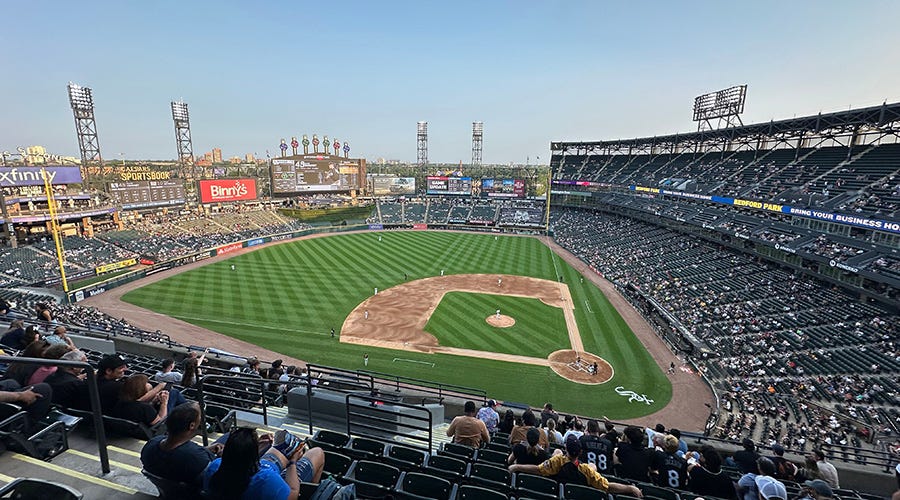
Significant renovations began in 2001, just 10 years after the park opened, to bring it up to the standards set by new ballparks built in Baltimore, Cleveland, Denver and Detroit, just to name a few. By the time the White Sox improbably won the World Series in 2005 — their first championship since 1917 — the park then known as U.S. Cellular Field had incorporated many modern fan amenities and removed 6,600 seats from the most distant rows of the upper deck.
As it now stands, Guaranteed Rate Field is a perfectly suitable, if unremarkable, place to watch a Major League Baseball game. The fan experience in the ballpark is on-par with the rest of the league: fun promotional giveaways and theme nights, exceptional ballpark food and beverage options, plenty of social and family areas and activities to entertain everyone. The biggest problem, as stated earlier, is the White Sox are a Major League Baseball team in name only.
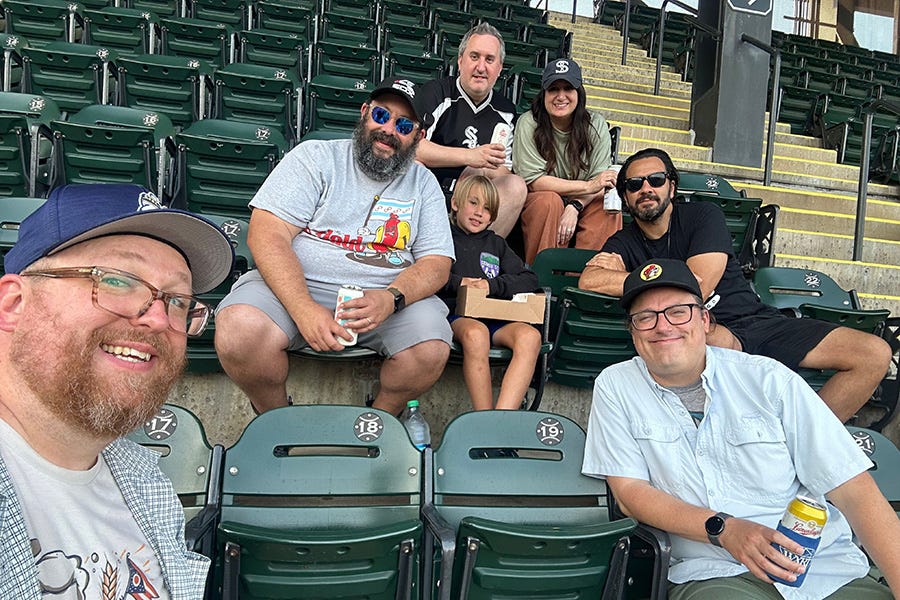
I was excited to see Garrett Crochet make a start against the visiting Pittsburgh Pirates, the same Pirates whose own young phenom, Paul Skenes, dominated the Brewers one day prior, capping an impressive first half that earned him the honor of starting the 2024 All-Star Game for the National League. However, with Crochet having never shouldered a starting pitcher’s workload in the major leagues, only two years removed from elbow reconstruction surgery, and a major trade chip for the rapidly sinking White Sox, manager Pedro Grifol pulled his starter after just two innings. Don’t be surprised to see him throw an inning in the All-Star Game as a showcase for all the other teams who desire his services for their playoff runs.
Chicago struck first on an RBI single by center fielder Luis Robert Jr. — also on the trade block this month — to take a 1-0 lead in the bottom of the third inning. The Pittsburgh offense would small ball their way to a 4-1 advantage after six innings and hold that lead to the final.
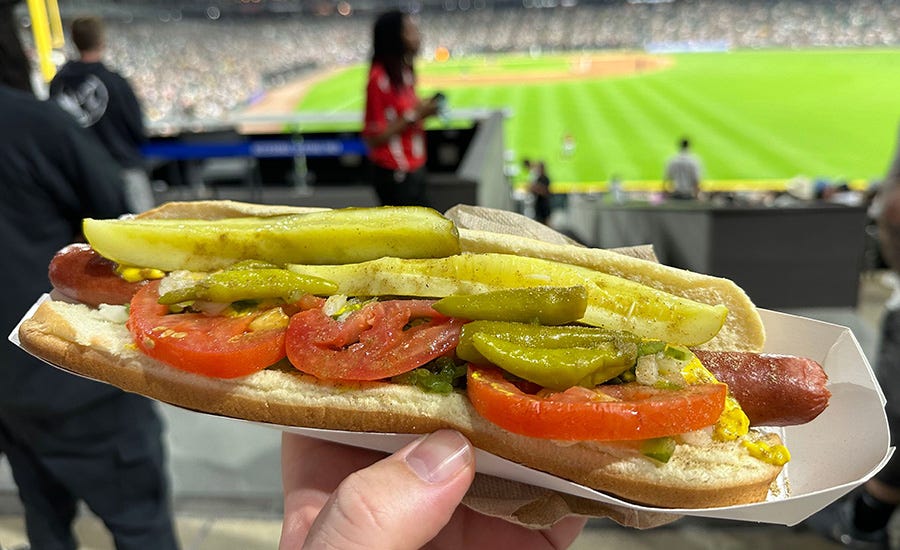
Lisa and Mike and Mike and I stayed for the post-game fireworks show since the White Sox put up no fireworks of their own during the contest. For the second time in two weeks, I attempted to visit the team store after the conclusion of the game and was rebuffed: it’s possible that I simply missed the access point inside the ballpark, but it’s also possible that it closed before I could get there. Part of the confusion lies in the layout of the stadium addendum north of 35th Street where the team store is located: that modern renovation is accessible by skywalk, but once you’re there from the upper grandstands, there are few if any directional aids to help you get where you want to go. Perhaps another throwback to old Comiskey Park and the early days of the new place: strict separation and an outward disdain for the fans who can only afford the cheap seats.
We made our way back to Marz — first on foot and then via Lyft after I yelled at a random Cybertruck driver — capping off the evening with another round before politely being asked to leave at midnight. The non-attached Mike and I chatted on the Red Line train back to the North Side until his stop in Wrigleyville. Russ was still awake when I got back to his place, so we stayed up watching AI-generated joke R&B songs until we passed out.
Guaranteed Rate Field, like Comiskey Park before it on the same site, was built atop a garbage dump just up the street from the most notorious slaughterhouses in America. If that’s not the perfect metaphor for the fetid, rotting abomination of a team that Jerry Reinsdorf has built on the South Side of Chicago, I don’t know what is.
The Colorado Rockies, who play half of their games in the offense-boosting thin air of Coors Field, have given up 572 runs to Chicago’s 490.
In 48 home dates, the White Sox have averaged 17,437 fans in attendance, ranking them 27th in MLB, ahead of perennially apathetic fanbases in Tampa and Miami, as well as the actively boycotting Oakland fans who are protesting the team’s impending move to Las Vegas via Sacramento.
I know that I’ve made a habit of describing my meals here, but I have nothing to say about my non-unique lunch other than I know I ate precisely 1.61 pounds of food.



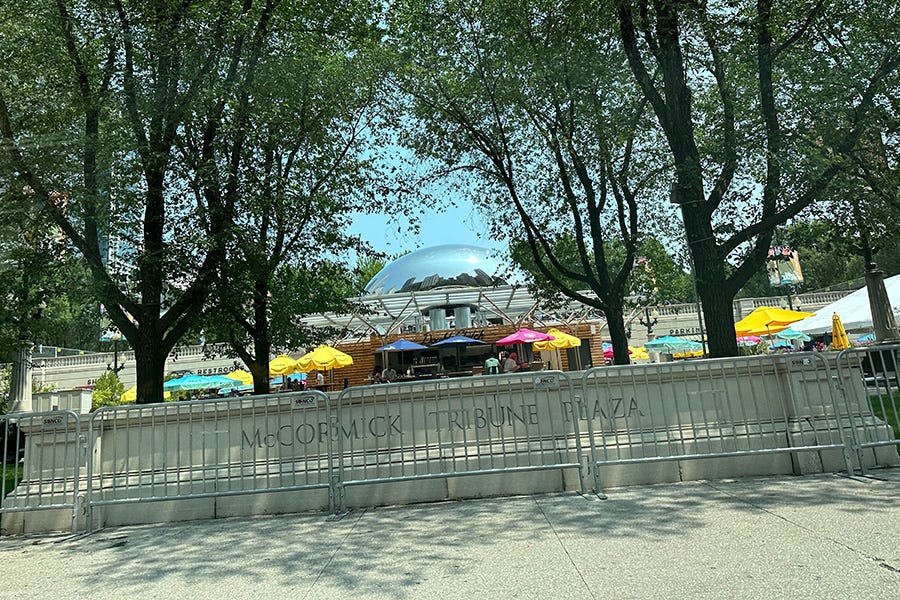
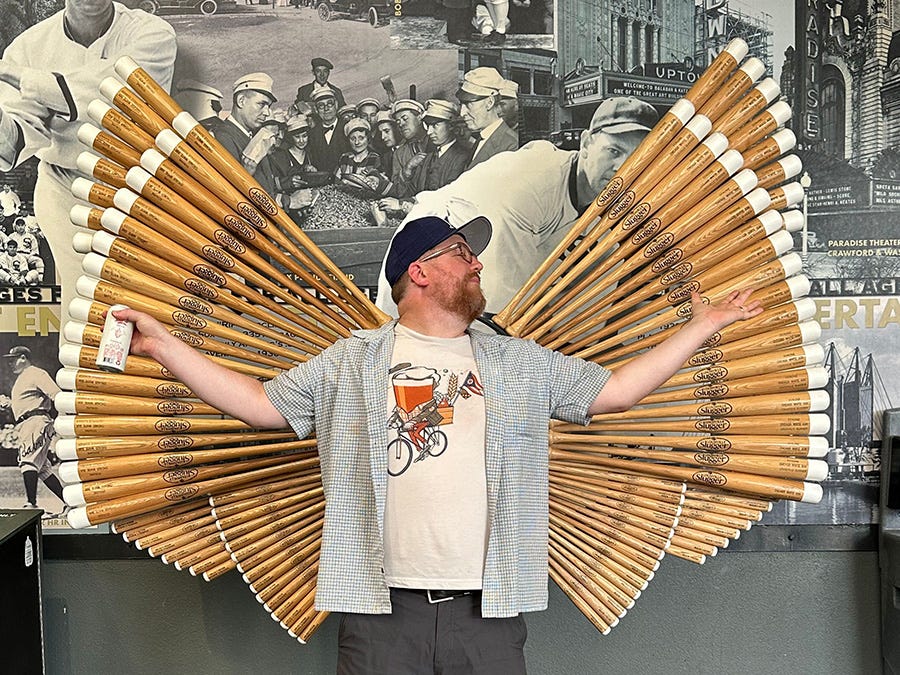
The ghost of Upton Sinclair is horny for this post